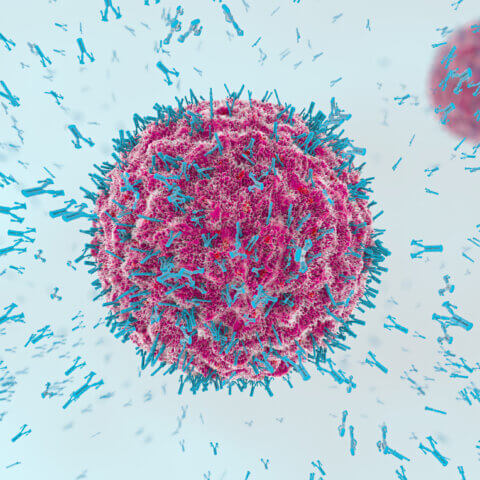Last Updated: August 9, 2024, 5 pm UTC
Progress in advanced computational methods using modeling and simulation has been enabled by advancements in computing technologies and the rise of artificial intelligence and machine learning. This has opened new opportunities in pharmaceutical drug development, such as the ability to evaluate large complex databases and to integrate information in useful ways. One exciting application of these technologies is the use of in silico trials in the development of novel therapies for rare diseases.
A Modern Twist for the Gold Standard of Clinical Research
The gold standard for clinical research intended for regulatory approval is the randomized controlled trial that compares an investigational drug candidate to either a placebo, active control, or standard of care (SoC). However, with rare diseases there may be no available treatments that could serve as SoC or active control in a clinical trial and assigning patients to placebo may be unethical. Acceptable trial designs in these cases include a single arm trial, a trial using real world data (RWD) or a trial employing in silico modeling and simulation to generate virtual placebo patients.
The term “in silico” means to conduct or produce by means of computer modeling and simulation (CM&S). In the context of pharmaceutical product development, in silico methods offer a powerful tool that complements traditional methods for gathering scientific evidence and can be implemented within two general constructs:
- Synthetic control arm: Computer-generated patients that replace or augment the actual patient placebo control arm in prospective human trials evaluating new treatments
- Completely simulated trial: Used to test drug candidates in ‘virtual patients’ before testing in humans
Success of in silico methods in rare disease trials relies on the ability to characterize the physiopathology of the disease. This is achieved by leveraging data from real patients available through a variety of sources, including real-world data, genomic data, biomarkers, pharmacologic data, and data from previous clinical trials. These data inform the construction of disease mechanistic models used to generate a synthetic control arm for use in the trial. In rare diseases with small patient populations, in silico methods provide a scientifically robust framework for evaluating efficacy claims in circumstances where it may not be feasible to conduct a comparative trial that uses actual patients only, due to either having no viable historical controls or when a placebo control is deemed unethical (Figure 1).
Figure 1: Comparison of Clinical Trial Designs
The Prelude to Applying In Silico Trials for Rare Diseases
In silico clinical trials have been recognized by the FDA as useful tools in advancing personalized treatment and streamlining randomized controlled trials. This reflects the FDA’s long history of reviewing submissions that implement CM&S across a broad range of areas, including quantitative clinical pharmacology, dose-response modeling, benefit-risk assessment, complex innovative designs and disease modeling/trial simulation. More recently, some key events that have enabled acceptance of in silico trials for evaluating treatments for rare diseases include:
- In 2016, the FDA formed the Modeling and Simulation Working Group to support the implementation of CM&S in the regulatory review process.
- In 2021, the FDA issued draft guidance on Credibility of Computational Modeling & Simulation (CM&S) in Medical Device Submissions. The document provides a risk-based framework to assist in the credibility assessment of CM&S (defined as trust in the predictive capability of a computational model) and is used to support medical device premarket submissions. A similar draft guidance document for drug development is in process.
- In 2022, the FDA published a report, Successes and Opportunities in Modeling & Simulation for FDA.1 Among the topics highlighted is the “model-informed drug development (MIDD) initiative.” MIDD is the Center for Drug Evaluation and Research’s (CDER) response to fulfilling recent amendments to the Prescription Drug User Fee Act VI that aims to advance model-based approaches to drug development and accelerate patient access to therapies.
The 2022 report, for example, describes how modeling and molecular dynamics simulations were used to elucidate interactions between SARS-CoV-2 trimeric spike protein and ACE2. The information gleaned from these in silico models was used to design and test medicines against the virus, speed-up the vaccine discovery pipeline, predict any therapeutic failures, and minimize undesired effects.2
While the randomized clinical trial remains the gold standard for regulatory approval, the FDA noted in the report that in silico clinical trials can be used to evaluate medical products in special circumstances, such as when human clinical trials may be unethical, or for augmenting human trials (e.g. with in silico virtual control arms) and reducing required sample size, or to ultimately be used in lieu of a human trial in unique situations. As a direct consequence, in silico methods in human clinical trials are emerging as an important new paradigm in the development of medical therapies – particularly useful for rare diseases.
It is worth mentioning that similar efforts aimed at optimizing in silico modeling and simulation in clinical research are underway within the European Medicines Agency (EMA) and other health and regulatory authorities worldwide.
Enriching Possibilities for Rare Disease Patients
Drug discovery and research starts with in vivo and in vitro models to select drug candidates. Advances in artificial intelligence, machine learning, large datasets, and CM&S technologies are assisting the pharmaceutical industry in the drug development process. The use of in silico or computational simulation methods are proving useful in rare diseases where there are few patients and, in many instances, fewer therapies.
Our goal at Premier Research is to help customers leverage these innovative technologies and accelerate rare disease clinical development with high quality and reduced cost. To learn more about our commitment to investing in new approaches that meet the complexities of rare disease research, read m

 Webinar
Webinar 


 Perspectives Blog
Perspectives Blog 